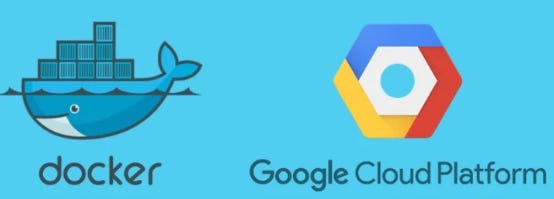In-depth Docker introduction in GCP(Google Cloud Platform)
Google Cloud Platform (GCP) is an excellent Infrastructure-as-a-Service (IaaS) solution that integrates with various Linux distros as well as with Windows Server through 2016. Combined with the Google Container Registry (GCR), this solution can be used to deploy and manage Windows Containers (as well as other container solutions). However, direct integration with Windows Server Containers is available only through the Windows Server 2016. The features of Windows Server Containers can be leveraged through the Windows Server 2016. This has been possible through the Windows Server Containers feature that has been made available through the Windows Server 2016. This feature has been made available through Docker for Windows, and Google has made it possible to integrate GCP with Docker for Windows.
The integration between GCP and Docker for Windows is a significant development, but it is still under active development. The integration currently requires some manual steps, and many features have been made available for testing only. For example, users can only create and manage Linux-based containers through GCP. However, users can deploy Windows-based containers and images, and they can also deploy gcr.io images. This is possible because of the integration of the GCR with the Docker for Windows. The GCR is a private registry that is used to store container images, and it is a significant update to the Docker Hub, which is a public registry that is used to store Docker images.
With the integration of Docker for Windows and the GCR, users can deploy the Windows Server Container by using Docker for Windows. This integration of Docker for Windows and the GCP can be used to deploy Windows Server Containers. The users can also use the same interface that they use to deploy Linux containers. This architecture allows users to deploy Windows Server Containers using the GCR and Docker for Windows. However, users should take into account that the support for Windows Server Containers is still under development, and that the deployment and management of Windows Server Container should be done with care.
The architecture of Docker for Windows is the same as the architecture of the Docker Engine. However, it has been enhanced in order to support the Windows Server Containers. The architecture of Docker for Windows is composed of the Docker Engine, Docker Client, and Docker Daemon. The Docker Engine can be used to deploy Linux containers, while the Docker Client and the Docker Daemon can be used to deploy Windows Server Containers. The Docker Daemon is the process that is responsible for managing the containers. It is responsible for setting up the name servers, the DNS, and the discovery features of the containers. The Docker Daemon is also responsible for managing the life cycle of containers.
The Docker Client is the process that is used to deploy containers. The Docker Client can be used to deploy containers or to manage containers that have already been deployed. The Docker Client can be used on any platform, and it communicates with the Docker Engine through the Docker API. The Docker Client is responsible for the management of the Docker images. It is responsible for downloading the images from the Docker Hub or from the GCR.
Users who use the Docker for Windows to manage Windows Server Containers will be able to take advantage of the advanced features of the Docker Engine. This includes the management of images, and the management of volumes, networks, and logging. The Docker Client is a significant part of the Docker for Windows, and it can be used to deploy containers as well as to manage containers. This is possible through the Docker CLI, which is a client-side command-line interface (CLI) that can be used to interface with the Docker Engine. The Docker CLI is the Docker Client.
The Docker CLI
The Docker CLI can be used to manage the Docker Engine, and it can be used to manage containers. The Docker CLI is a powerful CLI that can be used to control the Docker for Windows. The Docker CLI can be used to view logs, to manage container networks, and to manage containers. In addition, it can be used to start, stop, or restart a container. The Docker CLI is a client that can be used to interface with any Docker Engine. With the Docker CLI, users can manage the Docker for Windows as well as any other Docker Engine.
The Docker CLI is a client-side CLI that can be used to interface with the Docker Engine. It is a powerful tool that can be used for different purposes, and it can be used for different purposes depending on the operating system. The Docker CLI can be used to manage Windows Server Containers through Docker for Windows. However, the Docker CLI is also used to manage other containers, and it can be used to manage containers that run on Linux. This is possible through the docker CLI.
Since you have come this far, please donate for my Master’s degree.
Bitcoin Address: 32H62nU8fQN21PX3k5jHPGET9xpRmZhpaW
Venmo: @Kshitiz-Hamal
CashApp: $KshitizHamal

